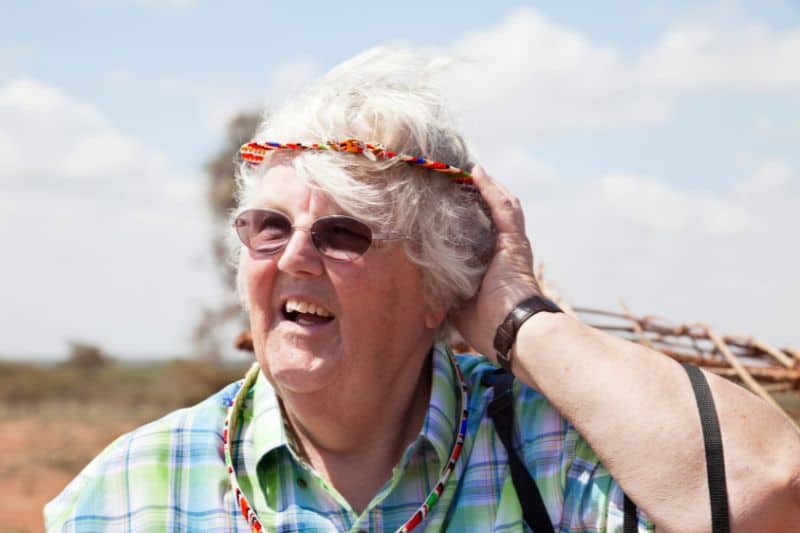Tourism, in simple terms, is an activity that involves people visiting places of interest, both local and international, and exploring new different activities and experiences for leisure or business.
Countries such as the Maldives, British Virgin Islands, China, Seychelles, and many others across the world are highly dependent on the tourism sector as a source of income generation.
The global tourism sector is the largest industry, contributing up to USD 7.7 Trillion to GDP in 2022, with France, the USA, Spain, China, and Italy being the world’s top destinations.
And on a global scale, tourism generates income as one of the fastest-growing industries for many countries. But in as much as mass international as well as local inbound tourism has numerous positive impacts on the environment, it also comes with its downsides.
As such, investment in sustainable tourism options can put in place policies or a framework that can help protect the environment as well as boost the tourism industry at a global level.
This article particularly sheds light on tourism’s positive and negative environmental impacts. The positive impacts of tourism on the environment include:
Environmental Impact of Tourism
Some of the common environmental effects that tourism has include:
1. Awareness Creation and Sensitization About Sustainable Tourism Options
Over time, tourism has brought about awareness of the conservation, protection, and maintenance of exotic, often near-extinct, fragile flora and fauna in the ecosystem.
Organizations such as The World Wildlife Fund, the UN Environment Programme, and the Nature Conservancy have set strategies, policies, and programs that steer ahead of the agenda of sustainable tourism.
International and local tourists, as well as dwellers, are also becoming more and more aware of the value of preserving and maintaining the environment.
2. The Adoption and Implementation of Regulatory Measures
By enacting regulatory measures to curb the potential negative aspects of tourism, the government has been able to offset several destructive environmental impacts.
Such measures include controlling the number of tourists, identifying and limiting accessibility within protected areas, and setting up restrictive legislation to conserve the environment, like carbon offset programs.
With these policies upheld, it has become easier to uphold the vitality and integrity of tourist sites and protect surrounding natural resources and ecosystems.

3. Development of Infrastructure
Improvement of roads, electrical grid systems, telecommunications, and social amenities are some of the benefits that have been realized around communities within tourist destination sites.
This development brings about the improvement of standards of living, especially in remote areas, and helps improve the landscape and aesthetic nature of an area.
4. Preservation of Historic Monuments and Cultural Heritage
Some international tourists seek to experience diversity in culture and a difference in the scenery as compared to theirs. This need brings about demand from the local dwellers to retain their culture and preserve their historical monuments as it becomes a tourist attraction.
Some of their cultural practices not eroded by modern civilization are linked to the area’s natural habitat. Practices such as using herbs for medication or linking certain wild animals with historical significance help retain and preserve their ecosystem.

Despite the benefits of tourism as a fast-growing industry globally, it has left behind numerous poorly managed and uncontrolled negative impacts on the environment that warrant the need for ecotourism or sustainable tourism options.
Some of the negative impacts of unsustainable tourism practices that should be brought to the people’s attention include:
5. Degradation and Loss of Natural Ecosystems and Aesthetic Landscape
Due to increased tourism, poorly planned infrastructural development, including excessive paving, sand, and beach mining, haphazard construction of resorts, hotels, roads, airports, power plants, reservoirs, and waste disposal systems, has caused congestion in vulnerable areas.
These include delicate ecosystems like natural habitats for wildlife, wetlands, coral reefs, lakes, forests, minerals, oceans, fertile soils, and riverbed basins. The consequences of such actions have raised concerns about these sensitive areas’ environmental impact and sustainability.
Encroachment into the natural habitat of plant and animal species to build hotels, roads, and beaches poses a great risk to the endangered species and often pushes wildlife to migrate in search of less congested areas or deeper into the forest that may have unfavorable breeding, preying, camouflaging, and feeding environments.
Besides pushing wildlife far into the interior into the wild, development projects mostly affect the scenery and aesthetic nature of natural habitats, thereby destroying the quality that makes it a tourist attraction site in the first place.

6. Leads to Various Types of Environmental Pollution
Tourism as a whole and some of the actions by tourists have, over time, adversely affected the destination areas through various kinds of environmental pollution, including air, land, water, and soil.
Some tourists, for example, will litter and leave behind garbage or waste like plastic wrappers and cigarette butts in the surrounding environment, thereby causing land pollution, plastic pollution, and cigarette pollution, respectively.
Water pollution due to recreational boating activities has equally been reported. According to estimates by Ocean Conservancy, for instance, an estimated 70,000 tons of wastewater are produced per year from cruise ships in the Caribbean, which affects the natural habitat of marine life.
Sometimes, land degradation can also happen in the form of soil erosion due to the creation of nature trails, the cutting of bushes, and obtaining wood fuel to facilitate hiking and camping activities.
Tourism is also highly associated with noise pollution during festive seasons and events, particularly due to high noise levels from cars, buses, airplanes, and recreational vehicles.
This noise causes distress to wildlife and even alters wildlife’s natural activity patterns. And since tourism accounts for more than 60% of all air travel, it is equally responsible for a significant share of air pollution through travel air emissions.
7. Depletion of Natural Resources and Putting a Strain on The Locally Existing Ones
When the number of tourists visiting an area over time surpasses the level to which the area can sustain, it subsequently leads to an overuse of the available local resources, causing a strain on the environment.
In most cases, tourism puts a strain on the already scarce local natural resources owing to over-consumption.
Food, fresh water, and power usage in hotels and resorts increase to a high capacity when tourist numbers increase, which also affects the access of local dwellers to such services or resources.
And on instances where marine tourists taking part in recreational fishing are not properly controlled, the outcome is the endangerment of some of the aquatic species – causing an imbalance in aquatic ecological functions.

8. Erosion of Social and Cultural Norms Aimed at Preserving Local and Environmental Heritages
International tourists come with diverse social-cultural behaviors that are often quite distinct from the usual ways of local dwellers. Tourism involves intermingling and exposure to new experiences, new practices, a dynamic way of living, new traditions, and new historical backgrounds for the locals.
As such, in some places, this has influenced people to abandon their traditional practices, beliefs, norms, religion, and values for the newly acquired practices, eroding their ways of life.
For instance, practices like traditional medicine, the consumption and protection of indigenous foods, wildlife, and areas considered sacred have been affected.
These practices, rooted in cultural and environmental conservation, face challenges as they give way to more modern influences. The delicate balance between cultural preservation and the impacts of tourism poses a significant challenge for many communities.
In tourist destinations such as Australia, Brazil, certain African countries, and China, many indigenous communities, like the Aboriginals, strive to uphold a harmonious balance between nature and human activities. Their traditional ways of life and beliefs emphasize the importance of avoiding harm to nature, thereby contributing to the conservation of biodiversity and natural ecosystems.
Their beliefs and values are that nature is life and that it provides them a direct link with their ancestors. With the introduction and influence of new or outside cultures, however, it may erode such practices, ultimately leading to the degradation of natural ecosystems.
9. A Contributor to Global Warming and Climate Change
Tourism is a key contributor to greenhouse gases emitted in the atmosphere, which have been scientifically proven to be the main reason for the increasing global temperatures and changing climates. This is simply because tourism entails the movement of people from their areas of residence to new destinations.
Environmental specialists attribute the ever-rising global temperatures to increased greenhouse emissions that trap the sun’s rays. One of the leading greenhouse gasses is carbon dioxide, mainly released into the atmosphere due to the combustion of natural gases and fossil fuels in the generation of electricity, in industries, and in the powering of automobiles.
Tourism accounts for over 55% of traffic movement globally, and for this reason, it contributes to an estimated 3% of total carbon dioxide emissions. As the number of tourists grows over the years, the level of emissions will rise, and climate change is also expected to worsen.
Conclusion
To sum up, environmental sustainability is an issue of utmost concern even when promoting tourism. From the discussions herein, it is correct to conclude that regarding the environment, tourism has advantages and probable threats that ought to be examined.
This calls for practicing healthier and more sustainable tourism practices, especially eco-tourism. It desperately requires everyone’s involvement and initiative to conserve and protect the environment when traveling or in a foreign land, as it has been proven that it is possible to ensure a mutually beneficial co-existence between tourism and the surrounding ecosystems and natural resources.
Efficient management and proper planning with the aid of strict legislation and proper interpretation are also key to creating ecological awareness for both the local and visiting tourists.
References:






